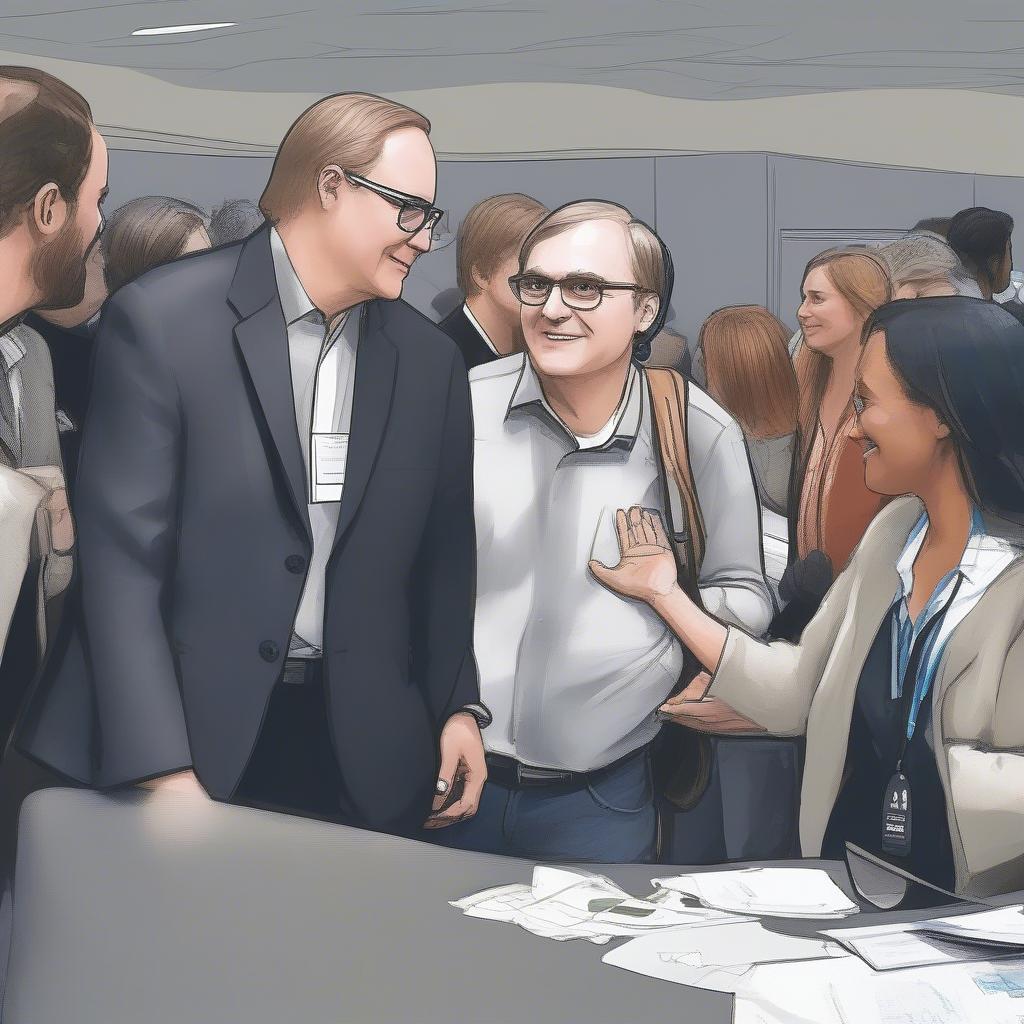
The question “Who Made Microsoft?” often evokes the image of Bill Gates, a name synonymous with the tech giant. However, Microsoft’s story isn’t a solo act. It’s a tale of two childhood friends, a shared passion for computers, and a vision that revolutionized the world. While Bill Gates is the more recognizable face, Microsoft’s creation is inextricably linked to Paul Allen, his brilliant partner. Their collaboration, fueled by a love for programming and a drive to make computers accessible to everyone, laid the foundation for one of the most influential companies in history.
Table Content:
The Early Days: A Partnership Forged in Code
Bill Gates and Paul Allen met at Lakeside School, a private school in Seattle, where they bonded over their mutual fascination with computers. In the late 1960s, computers were massive, expensive machines, primarily accessible to large corporations and universities. Yet, Gates and Allen saw their potential, spending countless hours learning programming languages and exploring the then-nascent world of software. Their passion quickly transformed into a shared ambition – to bring the power of computing to the masses.
They honed their skills on a General Electric timesharing computer, a rare opportunity at the time. This early exposure fueled their entrepreneurial spirit. They formed a company called Traf-O-Data, aiming to analyze traffic patterns. While this venture didn’t achieve widespread success, it provided invaluable experience and cemented their partnership.
The Altair 8800: A Spark of Inspiration
The pivotal moment arrived in 1975 with the introduction of the Altair 8800, one of the first personal computers. Recognizing the groundbreaking potential, Gates and Allen contacted the manufacturer, MITS, offering to develop a BASIC interpreter, a programming language that would make the Altair more user-friendly. Remarkably, they hadn’t even seen the Altair in person when they made the pitch.
Their gamble paid off. The BASIC interpreter was a success, and MITS agreed to distribute it. This marked the official birth of Microsoft, initially named “Micro-Soft,” a portmanteau of “microcomputer” and “software.” The name was later shortened to Microsoft.
Building an Empire: From BASIC to Windows
With the success of their BASIC interpreter, Microsoft quickly established itself as a key player in the burgeoning personal computer industry. They developed software for various platforms, constantly innovating and expanding their reach. The company’s relentless pursuit of excellence and adaptability fueled its growth. Gates’s sharp business acumen and Allen’s technical brilliance proved a winning combination.
The release of MS-DOS, the operating system for IBM’s personal computers, catapulted Microsoft to new heights. It became the dominant operating system, solidifying the company’s position as an industry leader. This success laid the groundwork for the development of Windows, the graphical user interface that would transform the way people interacted with computers.
Paul Allen’s Legacy: Beyond Microsoft
While Gates remained the public face of Microsoft, Paul Allen’s contributions were crucial to the company’s early success. He possessed a remarkable ability to foresee technological trends. His vision played a critical role in shaping Microsoft’s direction. In 1983, Allen left Microsoft due to health issues, but he remained a significant shareholder and continued to contribute to the tech world through philanthropy and various business ventures.
Allen’s impact extended beyond Microsoft. He became a renowned philanthropist, supporting scientific research, arts, and conservation efforts. He also invested in various technology companies, demonstrating his continued passion for innovation.
 Paul Allen: Philanthropy and Technology
Paul Allen: Philanthropy and Technology
A Lasting Impact: The Microsoft Legacy
The story of “who made Microsoft” is more than just a historical account of a company’s founding. It’s a testament to the power of vision, partnership, and relentless pursuit of innovation. Gates and Allen, two young men with a shared dream, transformed the world with their contributions to the personal computer revolution. Their legacy continues to inspire countless individuals in the tech industry and beyond.
Conclusion
The question “who made Microsoft?” points to a collaborative effort spearheaded by Bill Gates and Paul Allen. Their combined talents and shared vision laid the foundation for a company that has shaped the modern world. From the early days of BASIC to the ubiquitous presence of Windows, Microsoft’s journey is a story of innovation and entrepreneurial spirit, forever linked to the names of its two founders.
FAQ
- When was Microsoft founded? Microsoft was founded in 1975.
- What was the first product Microsoft developed? Microsoft’s first product was a BASIC interpreter for the Altair 8800.
- Why did Paul Allen leave Microsoft? Paul Allen left Microsoft in 1983 due to health reasons.
- What operating system did Microsoft develop for IBM? Microsoft developed MS-DOS for IBM.
- What is Bill Gates known for besides Microsoft? Bill Gates is also known for his extensive philanthropy through the Bill & Melinda Gates Foundation.
- What was Paul Allen’s role in Microsoft? Paul Allen co-founded Microsoft and played a key role in its early development and strategic direction.
- What is Microsoft’s most famous product? Microsoft’s most famous product is the Windows operating system.